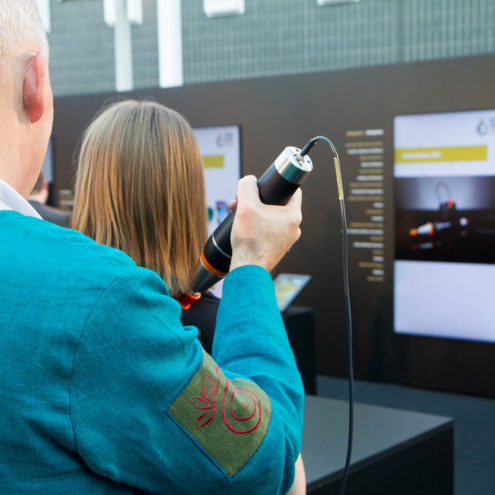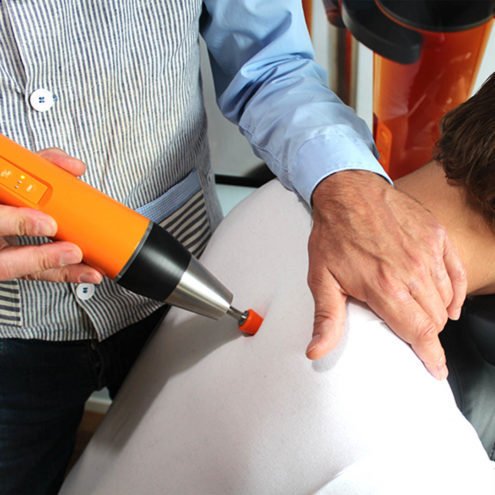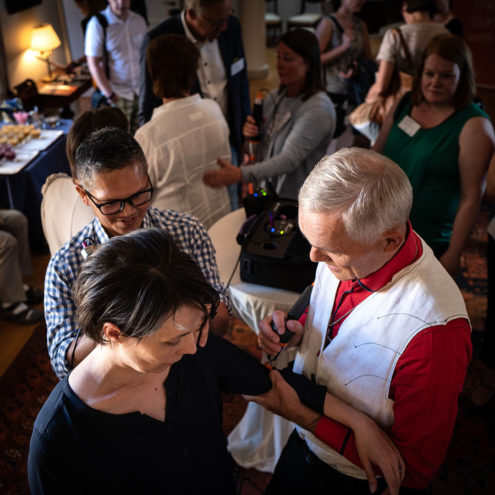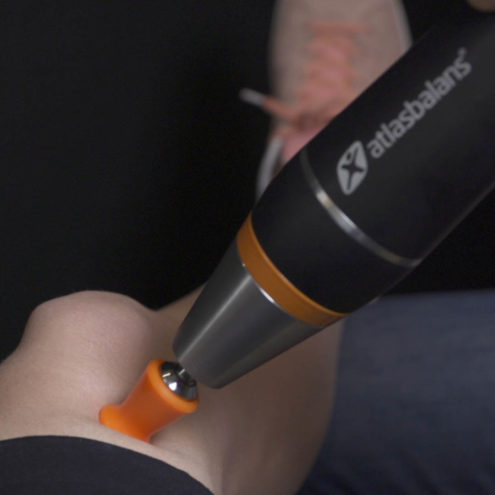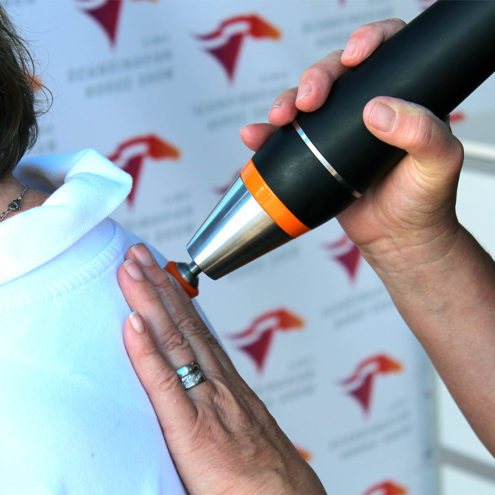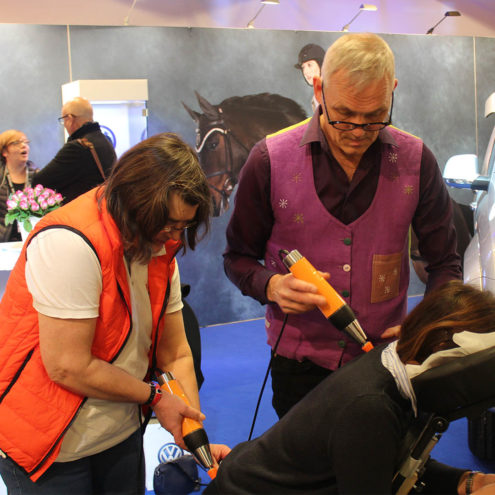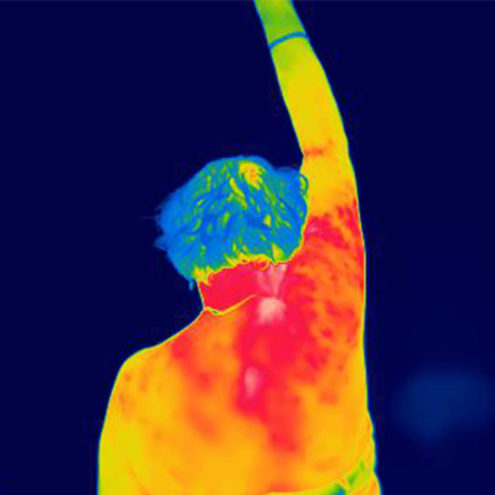Gout of the ankle: symptoms, causes and effective treatment

What is gout of the ankle?
Gout (arthritis urica) is the most common inflammatory joint disease (arthritis) in our society. The inflammation is caused by hyperuricemia, excessive levels of uric acid/urate in the blood. Uric acid is very insoluble and can crystallize and end up in joints, tendons or other surrounding tissues. This can lead to sudden, intense pain, swelling and redness.
Gout most commonly affects the big toe, but other parts of the foot can also be affected, including the ankle. The disease is more common in men. The rising prevalence of gout is partly due to changes in lifestyle and the increased prevalence of high body weight. Living with gout can be very distressing and affect your daily activities and work life.
Symptoms of gout of the ankle joint
A gouty ankle attack is characterized by sudden, intense pain in the joint that often occurs during the night when the body temperature drops. Other common symptoms in the affected ankle include stiffness and reduced range of motion, tenderness, redness, warmth and swelling.
Causes and triggering factors for gout of the ankle joint
There are several lifestyle factors that can affect the risk of developing gout in the ankle. For example, high body weight, whether caused by obesity or muscle mass, can lead to high levels of uric acid in the blood. It is important to note that people who are overweight often have several factors that can increase the risk of gout, such as insulin resistance and hyperlipidemia. In addition, it should be noted that short-term muscle work increases blood uric acid levels, while regular moderate exercise lowers them.
High alcohol consumption can increase the risk of developing gout. When alcohol is broken down, it produces lactate, which inhibits the excretion of uric acid from the kidneys. High intake of purine-rich foods can also increase uric acid levels in the blood.
In recent years, several gene variations have been found that increase uric acid in the blood. The gene variations may also provide a partial explanation for the large differences in the incidence of gout around the world. If the disease runs in the family, there is a greater risk of being affected as there is a hereditary component.
There are also some medicines that can increase the risk of gout. These include diuretics, cytostatics, lithium, but also medicines containing acetylsalicylic acid and nicotinic acid can increase the level of uric acid in the blood.
How is gout of the ankle diagnosed?
Often, diagnosing gout in the ankle is very easy, as the symptoms are very clear. A blood sample will also be taken to check uric acid levels, and sometimes an X-ray and analysis of the synovial fluid may be necessary to make the diagnosis more certain. Analysis of synovial fluid and blood tests can help detect the disease quickly by finding early signs. Unfortunately, many health centers do not have access to these methods. In order to classify a joint disease as gout, various criteria have been developed that must be met.
Effective treatment of gout of the ankle joint
Emergency treatment and pain relief
In acute gout, colchicine and anti-inflammatory painkillers or injections are the main treatment, even if the person is already on urate-lowering therapy. It is also important to relieve and rest the joint as pressure can make the pain worse.
Long-term treatment and prevention
To reduce the risk of gout recurrence, treatment is often with anti-inflammatory and urate-lowering drugs such as Allopurinol and Febuxostat. Treatment often needs to be monitored to check that uric acid levels are at the right level.
Home treatments and lifestyle changes
There are several lifestyle changes you can make to reduce your risk of developing gout in the ankle. These include maintaining a healthy body weight with regular exercise. Staying hydrated and reducing consumption of purine-rich foods. Reducing your alcohol consumption is also important. In the event of an attack, it is important not to put weight on the foot as the increased pressure can make the pain worse.
Possible complications
If left unmanaged, ankle gout can cause complications in the form of chronic gout with damage to bones, joints and articular cartilage. Chronic gout can also form so-called ‘gouty nodules’, or tophi. These consist of accumulations of urate crystals and are often localized around the outer ear, elbow bursa, Achilles tendon or fingers. Trophies can cause painful and difficult-to-heal ulcers and impaired function. Another long-term complication of gout is kidney stones and other damage to the kidneys.
How we can help you at the FasciaClinics
At FasciaClinics, we specialize in seeing and treating the body from a holistic perspective. We perform fascia treatments, a highly effective treatment method that focuses on treating and maintaining the fascia in our body. Fascia is the network of connective tissue that binds and permeates everything in our body. All cells, tissues (even bone), muscles and organs contain fascia. The fascia is also very rich in free pain receptors, known as nociceptors, which react to stimuli such as pressure, and send signals to the central nervous system where it is interpreted as pain.
Fascia treatment focuses on releasing tension and adhesions in the fascia and increasing its flow. Reduced pressure and increased circulation allow cell membranes to more easily absorb nutrients and release waste products. Fascia treatment can lead to improved mobility of the affected joint with less pain and improved self-healing.
During a visit, we analyze the whole body to see where compensations and imbalances are and how they have spread. If there is an imbalance in the body, there is a risk that they will spread and affect other structures. That’s why it’s very important to seek help quickly as soon as you experience any symptoms.
 Search
Search


